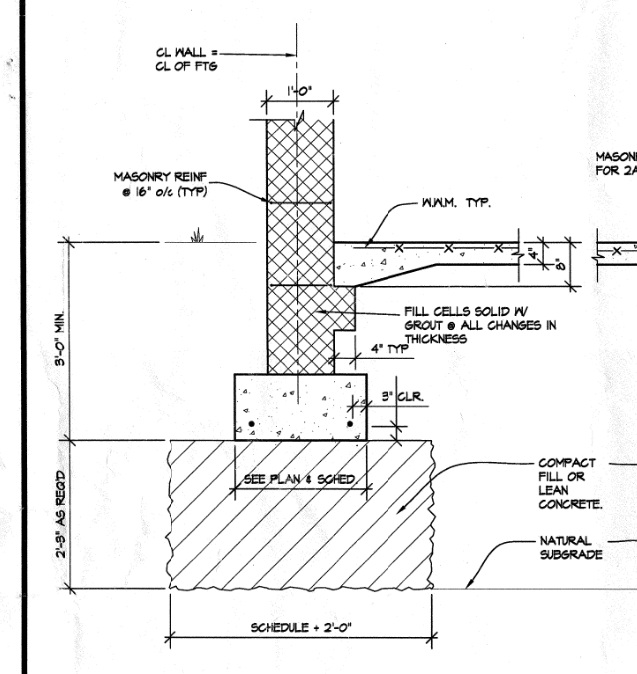We are adding a 66-foot wide addition onto the side of an existing building. The arch is showing the new roof (approx 66-foot span) to bear on an existing 12" block wall. The existing wall footing is only 12" deep by 24" wide with (3) #5 X cont rebar in the footing. There are no tie bars. See image below.
The architect suggests enlarging the wall footing - "whatever it needs to be" - in order to get the footing to work for the additional load. I checked it and it doesn't work due to eccentricity. Also, I don't have a dowel bar into the footing so there is no fixity between the wall and the footing.
Even if I could get the footing to work, How do I develop that rebar if there are no existing tie bars in the existing footing? Do you have to worry about developing the bars if you are using Hilti HY 200 + rebar?
They are hell bent on getting this to work.

The architect suggests enlarging the wall footing - "whatever it needs to be" - in order to get the footing to work for the additional load. I checked it and it doesn't work due to eccentricity. Also, I don't have a dowel bar into the footing so there is no fixity between the wall and the footing.
Even if I could get the footing to work, How do I develop that rebar if there are no existing tie bars in the existing footing? Do you have to worry about developing the bars if you are using Hilti HY 200 + rebar?
They are hell bent on getting this to work.


